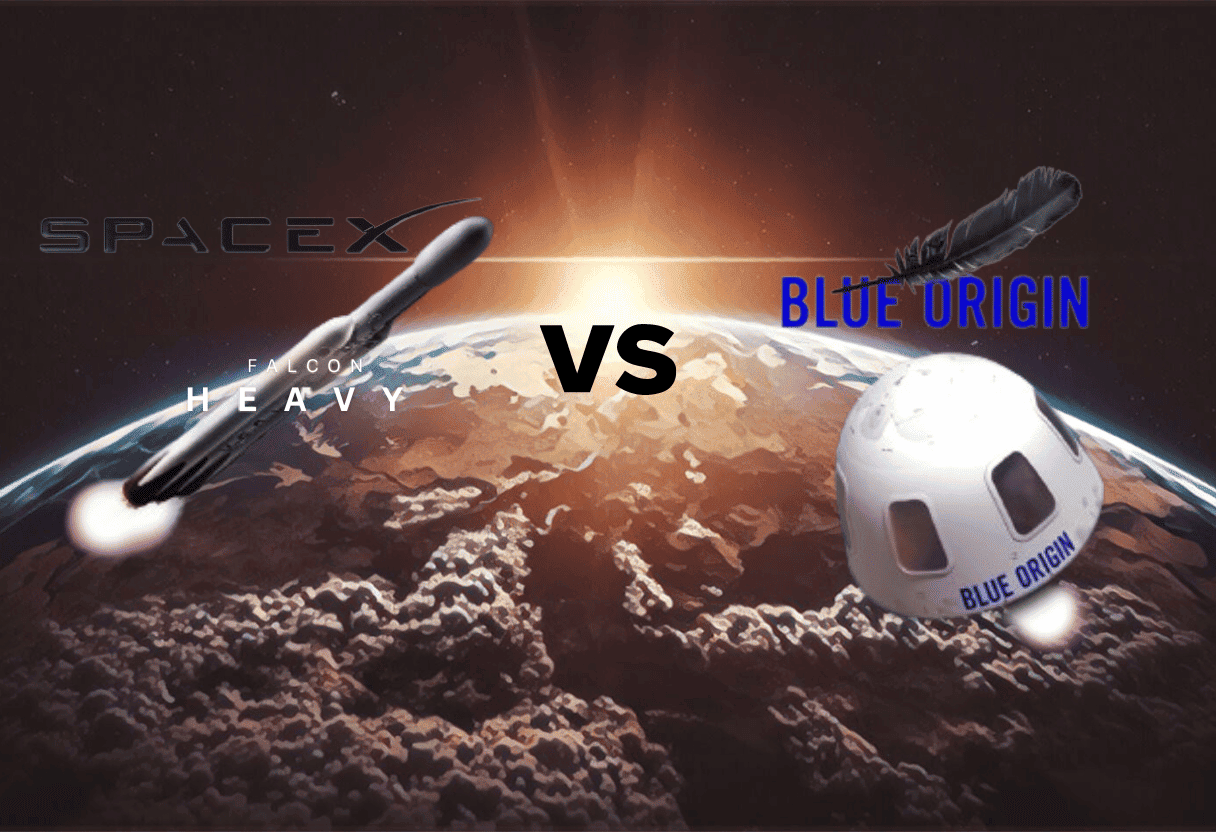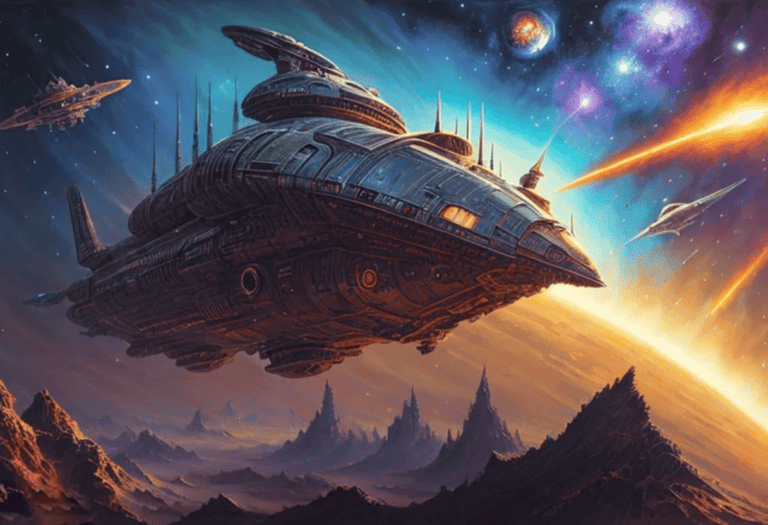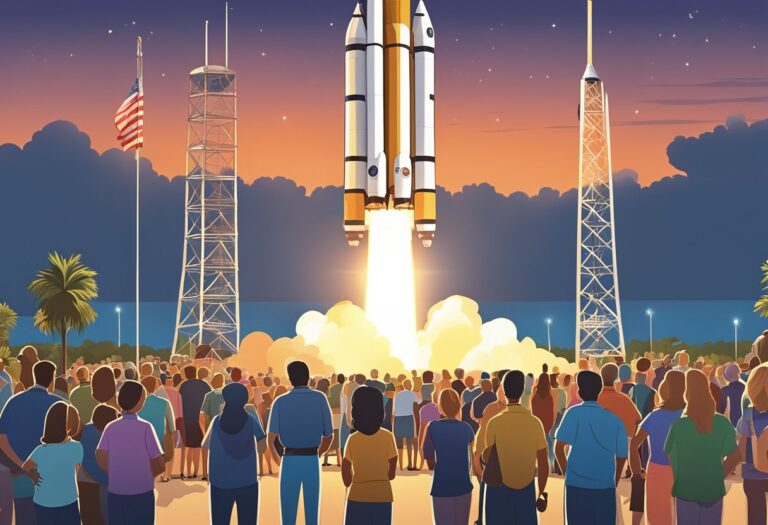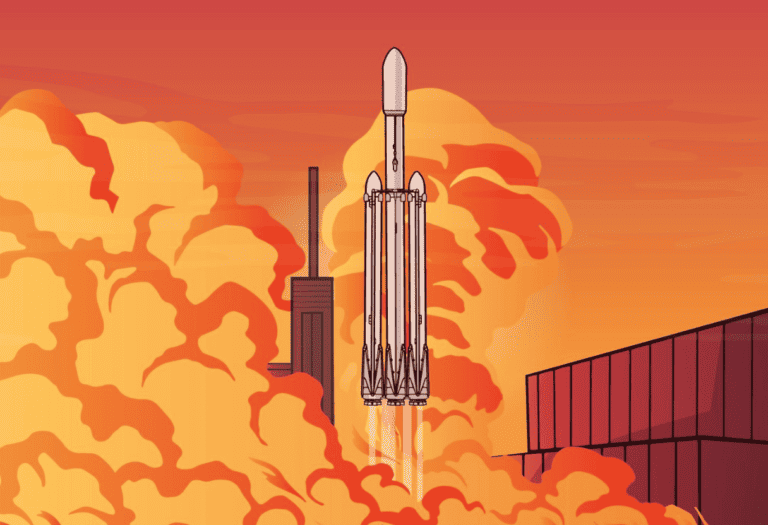The space race is no longer just a memory of the Cold War; it’s evolved into a thrilling competition between two private industry titans: SpaceX and Blue Origin.
I’ve watched these companies push the boundaries of what’s possible, each with its own vision for the future of space exploration.
While SpaceX has been grabbing headlines with its impressive launches and ambitious projects like Mars colonization, Blue Origin’s methodical approach to space tourism and infrastructure is equally fascinating.
I’m diving into the heart of this rivalry to see how each company is shaping our journey to the stars.
SpaceX & Blue Origin: Rivalries driving reusable rockets, space tourism, & ambitious visions for humanity’s future among the stars.
History of SpaceX and Blue Origin
SpaceX, officially known as Space Exploration Technologies Corp., was founded in 2002 by Elon Musk with the goal of reducing space transportation costs and enabling the colonization of Mars. I’ve followed SpaceX’s journey closely, witnessing its first major milestone in 2008 when the Falcon 1 became the first privately funded liquid-fueled rocket to reach orbit. Since then, SpaceX’s achievements have grown considerably. The company made history again in 2012 when its Dragon spacecraft became the first commercial craft to deliver cargo to the International Space Station (ISS).
Blue Origin, on the other hand, was established by Jeff Bezos in 2000, with its vision “Millions of people living and working in space.” The company’s development has been shrouded in more secrecy compared to SpaceX, but it’s clear that Blue Origin’s focus is on building a sustainable human presence beyond Earth. Blue Origin’s prominent feat is the New Shepard rocket, which is designed for suborbital flight. Though it hasn’t sent humans into orbit yet, the rocket has successfully tested several uncrewed flights.
The companies differ in their approach. I’ve observed SpaceX rapidly iterating its technology – emphasizing reusability with its Falcon 9 boosters and ambitious Starship development. Conversely, Blue Origin proceeds with caution, rigorously testing and perfecting its vehicles over many years. This difference is emblematic of their founders’ personalities: Musk’s bold and public challenges versus Bezos’s meticulous and private strategy.
SpaceX has been busy establishing various records: from Falcon 9’s reusability to launching an unprecedented number of satellites in a single mission. Blue Origin’s advancements have been more measured but are making waves with their New Glenn rocket, intended to serve as a heavy-lift launch vehicle for missions beyond low Earth orbit.
| Milestone | SpaceX | Blue Origin |
|---|---|---|
| Founded Year | 2002 | 2000 |
| First Orbital Launch | 2008 (Falcon 1) | Yet to Occur |
| First ISS Mission | 2012 (Dragon) | TBD |
While both companies have distinct timelines and technological milestones, they share a common vision of reducing barriers to space travel. Their competition is fueling innovations that will likely see both play pivotal roles in humanity’s off-world ambitions.
Rockets and Launch Systems
When comparing SpaceX and Blue Origin, it’s crucial to examine the heart of their operations: rockets and launch systems. SpaceX’s Falcon 9 has become a household name in rocket technology thanks to its reliability and the groundbreaking feat of reusability. Following Falcon 9, the Falcon Heavy was introduced, recognized for its unparalleled payload capacity and its role in propelling a Tesla Roadster into space.
On the other hand, Blue Origin has made strides with its New Shepard rocket. Designed for suborbital flights, it’s ideal for space tourism – a nod to the company’s vision of making space more accessible to private individuals. They’re also developing New Glenn, which is set to rival SpaceX’s heavy-lift capabilities and lay foundations for further exploration.
Diving deeper into the specs:
- SpaceX’s Falcon 9 offers a payload to Low Earth Orbit (LEO) of 22,800 kilograms, making it a leader for commercial satellite launches.
- Falcon Heavy amps it up with around 63,800 kilograms to LEO, demonstrating muscle for future Mars missions.
- New Shepard has the unique capability of reusable suborbital flights, while its crew capsule ensures a smooth ride for prospective space tourists.
- Set to debut soon, the New Glenn aims for heavy payloads pushing beyond 45,000 kilograms to LEO, shaping a new era for Blue Origin.
Both companies also have ambitious projects in the pipeline. SpaceX is furiously working on Starship, a colossal vehicle intended for deep space missions with a cargo capacity that aims to dwarf all current rockets. Blue Origin isn’t trailing too far behind, with secretive whispers around Project Jarvis, a potential game-changer in reusable upper stages.
Through constant innovation and pushing the boundaries, SpaceX and Blue Origin exemplify the spirit of modern space exploration. Each launch and test fire does not only redefine what’s possible but also ignites the global imagination about life beyond our atmosphere. Understanding their rockets and launch systems isn’t just a tale of competition; it’s a crucial look at the tools that will likely carve humanity’s future in the cosmos.
Achievements and Milestones
When we delve into the achievements of SpaceX and Blue Origin, it’s clear that both companies have made significant strides in advancing space technology. SpaceX’s milestones, for instance, are revolutionary. They became the first privately funded company to send a spacecraft to the International Space Station (ISS) in 2012 with the Dragon spacecraft. In 2020, SpaceX made history again when they launched NASA astronauts to the ISS as part of the Commercial Crew Program. This marked the first crewed flight to the ISS from US soil since the retirement of the Space Shuttle.
SpaceX has also achieved considerable success with the Falcon 9’s reusability. They impressively demonstrated that not only could their rockets launch payloads into orbit, but they could also be recovered and flown again. In fact, the reusable rocket boosters have become a staple of SpaceX’s operations, drastically reducing the cost of access to space.
On the other side, Blue Origin’s journey, although more understated than SpaceX’s, includes remarkable achievements of its own. Its suborbital spacecraft, New Shepard, has successfully flown above the Kármán line — the internationally recognized boundary of space — multiple times carrying research payloads. These missions have been crucial in testing technologies for future orbital flights.
Additionally, Blue Origin prides itself on its commitment to environmental sustainability with its BE-4 engine, designed to burn liquefied natural gas, a cleaner alternative compared to traditional rocket fuels. This engine is set to power both their New Glenn rocket and United Launch Alliance’s Vulcan Centaur.
Both companies harbor grand visions for the future of space travel and habitation, with SpaceX targeting Mars colonization and Blue Origin advocating for living and working in space habitats. Their rapid pace of development along with continuous achievements signals a transformative era in space exploration.
| SpaceX | Blue Origin |
|---|---|
| First cargo to ISS (2012) | New Shepard’s test flights |
| First crewed flight to ISS (2020) | Development of BE-4 engine |
| Falcon 9 reusability | Advocacy for space habitats |
Space Exploration Vision
When diving into the cosmic aspirations of SpaceX and Blue Origin, I’m often struck by their distinct yet formidable visions. At the forefront of SpaceX’s forward-thinking agenda is the colonization of Mars. Elon Musk, the CEO of SpaceX, boldly envisions a self-sustaining city on the Red Planet with a civilization capable of thriving independently from Earth. This interplanetary focus underscores the mission of SpaceX to ensure human survival and the continuity of consciousness. The ambitions are underpinned by the development of the Starship spacecraft, designed to carry humans and cargo to Mars and beyond.
In contrast to SpaceX’s Mars-centric vision, Jeff Bezos’ Blue Origin promotes the idea of millions of people living and working in space. Blue Origin’s approach hinges on building the infrastructure to facilitate a future where Earth is reserved primarily for residential and light industrial activities. Central to this vision is the concept of space habitats, floating colonies that could emulate Earth’s environment to support human life. This grand blueprint is the backbone of Project Jarvis, which aims to create reusable space vehicles to help achieve these industrialist dreams.
SpaceX’s Vision:
- Colonize Mars
- Build a self-sustaining city
- Ensure the longevity of human consciousness
- Millions living and working in space habitats
- Earth as a residential and light industrial hub
- Reusable spacecraft for industrial developments
Both companies are deeply involved in the science and technology driving these visions. While SpaceX makes regular headlines with its rapid advancements and launches, Blue Origin’s methodology is more gradual and meticulous, focusing on rigorous testing and the incremental development of technology like the BE-4 engine, which is expected to power both its own New Glenn rocket and United Launch Alliance’s Vulcan Centaur rocket. With every successful achievement, these visions inch closer to becoming a reality, and it’s fascinating to speculate on how these strategies will unfold in the decades to come.
Challenges and Setbacks
In telling the story of SpaceX and Blue Origin, it’s essential to address the hurdles they’ve faced. Technical failures have been a part of both companies’ journeys. SpaceX’s initial Falcon 1 flights faced multiple failures before achieving orbit. Their perseverance paid off, leading to the successful lineage of Falcon rockets. It’s a reminder that innovation in space technology is fraught with risk and requires resilience. On the other hand, Blue Origin’s cautious approach has meant fewer public failures, but it also points to a slower pace of development and frequent delays, as seen with the New Glenn.
Regulatory roadblocks have also impacted their progress. Navigating the complex web of spaceflight regulation requires patience and flexibility, qualities that have been tested as both companies expand their operations. For SpaceX, the ambitious Starship has faced environmental review processes and public scrutiny. Similarly, Blue Origin has had to manage FAA certifications and oversight, which at times, have slowed project momentum.
The competition for contracts and market share is another significant challenge. While SpaceX has secured numerous NASA contracts and commercial satellite launches, Blue Origin is still working to establish a foothold. Their methodical pace may be seen as cautious or strategic, but it leaves fewer opportunities for real-world testing and revenue generation, which are vital for growth in the aerospace sector.
Funding stands as a tall hurdle for space enterprises. SpaceX’s strategy has been aggressive, raising significant capital through investment rounds, contracts, and even leveraging the Starlink satellite project. In contrast, Blue Origin has relied heavily on the personal investment of its founder, Jeff Bezos, who sells a billion dollars of Amazon stock annually to fund the company. While Bezos’s commitment is formidable, the need for additional funding sources could become more pressing as project scopes expand.
Navigating public perception is a delicate aspect for space companies. SpaceX’s high visibility and frequent launch schedule grab headlines, but they also face scrutiny with each mishap. Blue Origin’s quieter approach garners less public judgment but also makes it harder to inspire the same level of excitement and investment in their vision. Balancing ambition with public relations is an ongoing challenge that both companies must master to maintain support and enthusiasm.
Conclusion
SpaceX and Blue Origin have carved their unique paths in the cosmos, each with remarkable achievements and ambitious futures.
They’ve faced their share of hurdles, yet their resilience shines as they push the boundaries of what’s possible in space exploration. It’s a thrilling era for space enthusiasts and I’m eager to see how these titans of the stars will continue to shape our journey among the stars. Their rivalry isn’t just a race for the heavens; it’s a testament to human ingenuity and the relentless pursuit of progress.
Here’s to the next chapter in this cosmic saga – may it be as groundbreaking as the ones that have come before.




